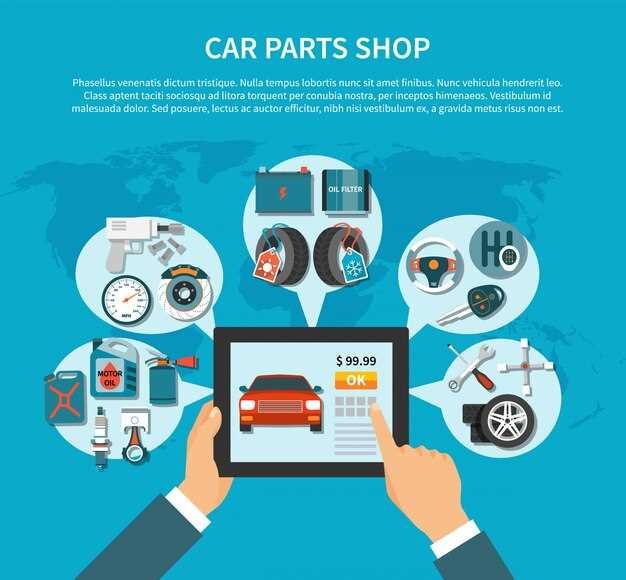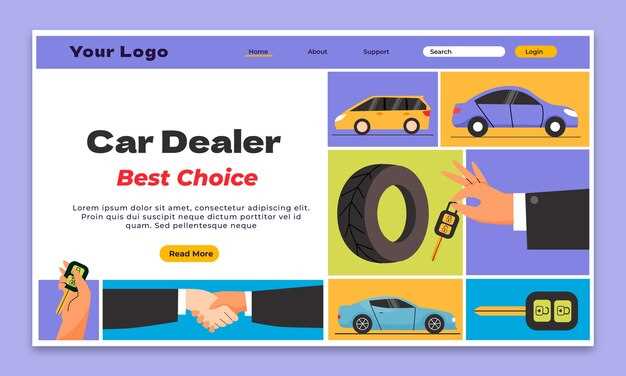
In today’s digital marketplace, the convenience of purchasing car parts online comes with a significant risk: the proliferation of counterfeit products. As car enthusiasts and everyday drivers alike rely on online platforms to source essential parts for their vehicles, it becomes increasingly important to develop an eye for spotting fakes. Counterfeit car parts not only compromise the performance of your vehicle but can also jeopardize your safety on the road.
Understanding how to differentiate between genuine and fake parts is crucial for making informed purchasing decisions. The online marketplace can be overwhelming, with countless sellers and brands vying for attention. Being aware of the telltale signs of counterfeit components can save you not only money but also prevent potential harm caused by subpar products.
This article will guide you through the key factors to consider when shopping online for car parts, helping you to identify and avoid counterfeit items. From recognizing reputable sellers to analyzing product details, we will equip you with the knowledge needed to make safe and effective purchases in the digital automotive marketplace.
Recognizing Red Flags in Product Descriptions and Images

When shopping online for car parts, it is crucial to be vigilant about potential counterfeit products. Recognizing red flags in product descriptions and images can save you from making costly mistakes.
Inconsistent Information: Pay close attention to any inconsistencies in the description. If a product claims to be from a reputable manufacturer but fails to provide specific model numbers or compatibility details, this is a major red flag. Genuine parts typically include thorough specifications.
Poor-Quality Images: Inspect the images provided. Authentic parts usually come with high-resolution images showing multiple angles. If the images are blurry or appear to be stock photos, this could indicate that the seller is attempting to disguise counterfeit parts.
Unrealistic Pricing: Be cautious of prices that seem too good to be true. If a part is offered at a significantly lower price than its market value, it may suggest that the product is counterfeit. Genuine car parts maintain a certain price range due to their quality and reliability.
Lack of Contact Information: Reputable sellers often provide comprehensive contact details, including a physical address and customer service options. A lack of this information can be a warning sign that the seller may be dealing in counterfeit parts.
Missing Certifications: Look for mentions of certifications or warranties in the product description. Genuine car parts usually come with certification from the manufacturer. If this information is lacking or vague, it could indicate that the part is not legitimate.
By keeping these red flags in mind while shopping, you can significantly reduce the risk of acquiring counterfeit car parts. Always prioritize quality over cost and verify the seller’s credibility before finalizing any purchase.
Verifying Seller Credibility and Customer Reviews

When shopping for car parts online, it is essential to verify the credibility of the seller to avoid purchasing counterfeit items. A trustworthy seller typically provides comprehensive information about their products, including detailed descriptions, specifications, and warranty details. Always check if the seller has been in business for a significant period, as established vendors tend to have a reputation to maintain.
Customer reviews can serve as a valuable resource in determining a seller’s reliability. Look for feedback from previous buyers regarding their experiences with the seller, focusing on reviews that mention the quality of the parts received. High ratings and positive comments often indicate that a seller is reputable. However, be cautious of overly positive reviews, as they may be fabricated or manipulated.
It is advisable to look for reviews on multiple platforms. Independent review sites can provide insights that may not be available directly on the seller’s website. Check if customers have raised issues related to counterfeit parts, which can be a red flag when evaluating a seller.
Furthermore, verify if the seller offers a return policy or guarantees authenticity, as reputable sellers will stand behind their product offerings. Any hesitation from a seller to provide such assurances should raise concerns about the legitimacy of the parts being sold.
In summary, to protect yourself when buying car parts online, carefully assess the seller’s credibility and scrutinize customer reviews for authenticity. These steps will significantly reduce the risk of acquiring counterfeit components that could compromise your vehicle’s performance.
Understanding Authenticity Tags and Industry Standards
When shopping for car parts online, recognizing authenticity tags and industry standards is crucial in avoiding counterfeit products. Authenticity tags are unique identifiers that manufacturers attach to legitimate parts to verify their origin and adherence to safety regulations. These tags can take the form of holograms, QR codes, or serialized labels, which provide proof of authenticity when scanned or inspected properly.
Industry standards, established by organizations such as the Society of Automotive Engineers (SAE) and the International Organization for Standardization (ISO), ensure that car parts meet specific quality and performance criteria. Genuine parts manufactured according to these standards typically undergo rigorous testing to ensure durability and compatibility with various vehicle models. Familiarizing yourself with these certifications can significantly reduce the risk of purchasing counterfeit items.
In your quest for authentic car parts online, always verify whether the seller provides clear information regarding authenticity tags. Look for transparent policies about product returns and guarantees, as reputable sellers will often stand behind their offerings. Additionally, researching the specific standards applicable to the parts you intend to buy will further inform your purchasing decisions and enhance your protection against counterfeit products.
